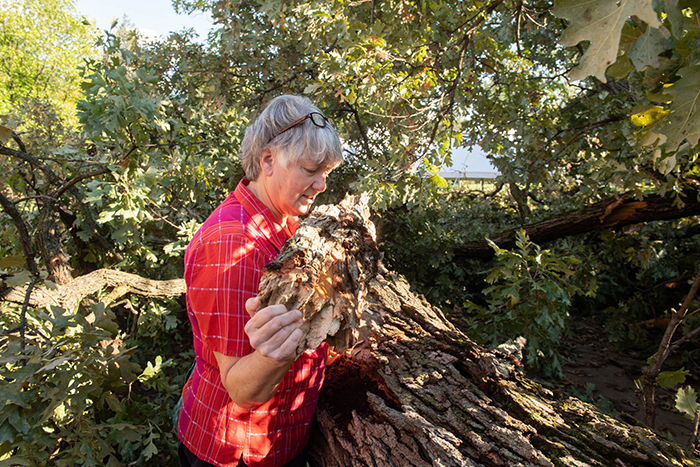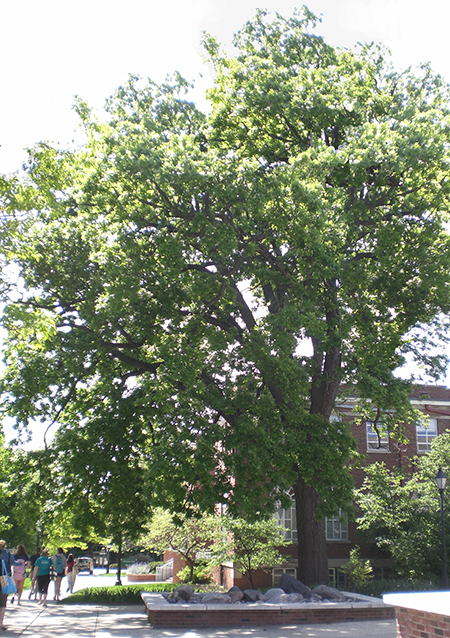Remembering the Big Bur Oak Tree
Contributed by Eric Nelson, Manager of Grounds Services
Oct. 28, 2018

BLOOMINGTON, Ill. — You may have noticed more sunlight than usual on the east side of Stevenson Hall beginning in early October, when a giant bur oak tree succumbed early one morning to a weekend of heavy rain.
Although we can’t positively verify the rumor that the fallen tree was the oldest on campus, we can say with some certainty that it was one of the top-10 senior members of the campus urban forest. While it is always sad to lose a campus tree, it is especially so when it is one that has shared so much campus history.
Campus arborist Ken Detloff had been keeping a close eye on the tree since early summer when he noticed the tree’s lean had increased. As the degree of westward lean continued to increase over the fall, the sad determination was made to have the tree removed, on Friday, Oct. 19, during Fall Break. But, Mother Nature had other plans.

Anyone who took a close-up look at the downed tree may have noticed that the dirt ball accompanying the base contained almost no visible root structure, an anomaly in such an old tree, which one would expect to have roots as long as six feet or more. Roots not only provide a tree’s nourishment, they also hold it in place during heavy rain or high wind.
Due to its longevity, this tree had lived through many campus construction projects over the years. First was the construction of Sheean Library and its subsequent demolition to make way for the building of State Farm Hall. Also, during the 1980s, a fiber optics line was trenched in along the east side of the tree. These projects involved grade changes and compaction of the root system that resulted in the degradation of the root structure, weakening the base support of the tree.
As for the future of the tree, much of the canopy became mulch that will be used locally. The tree will also provide a great deal of local firewood. We kept slices from the base for the purpose of dating the tree and perhaps creating a display showing a timeline of campus history.
It was hoped that the main trunk could be milled, with the boards used to create a bench or study table. However, upon closer examination it could not be determined that the core was clean of any potential metal debris from years past and was deemed unsuitable to be milled. And perhaps its most distinguished legacy: a piece of the tree will appear in an upcoming campus drama production this spring.
We are fortunate that, thanks in part to the generosity of donors, we have an ongoing tree development plan for the campus. This fall, for example, we received a donation from Homefield Energy for the purchase of 12 trees. At this time a list is being compiled and placements decided. Anyone can donate a tree by contacting the University Advancement Office by emailing: advancement@iwu.edu or calling: (309) 556-3091.
By Eric Nelson, Manager of Grounds Services